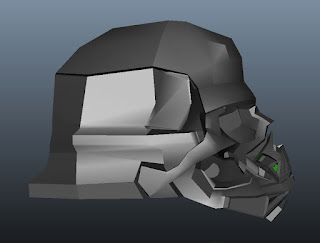Thursday, September 30, 2010
Monday, September 27, 2010
The Walled City on suckerPUNCH
I made it on suckerPUNCH's front page today! Very exciting. This is one of my favorite websites for seeing the latest in design and architecture. Now I'm featured alongside of some of my favorite designers!
http://www.suckerpunchdaily.com/
Walled City has also racked up invitations to two festivals: The Zero Film Festival and the 7th Annual Big Apple Film Festival.
http://www.zerofilmfest.com/
http://www.bigapplefilmfestival.com/
Thursday, September 23, 2010
Stockyard Unit 22 rough WIP#1
Friday, September 17, 2010
Tuesday, September 14, 2010
How would you say "The Walled City" comments on graffiti culture?
I was asked this question about my film from a curator, and I wanted to be clear that graffiti wasn't being used to fulfill the necessity for trend in our commercial culture, nor promotion of grafitti culture, nor hip hop culture. It stands for something more important, which I think is often missed when looking at graffiti. Beyond the defacement of valuable public/private property, there is something much more primal at work here. It simple terms, it stands for resistance against our physical boundaries (real or imaginary) which are arbitrary and contrived.

How would you say "The Walled City" comments on graffiti culture?
Well, "The Walled City" is definitely inspired by graffiti, but it by no means attempts to define it. The Walled City of Kowloon in Hong Kong was a place of sustainable anarchy for the less privileged. In many ways it blurred political and social boundaries. On paper, it was a plot of land owned by China, but it existed inside a British colony. Graffiti to me is a form of blurring as well. In practice it is illegal and can be seen as defacement of public property. However, to some, it is a form of art and a way for the people to blur the boundaries set up by society and to make these spaces their own. In extreme cases, boundaries can manifest themselves as walls such as the Berlin wall, the Great Wall of China, (or its modern equivalent, The Great Firewall of China) and The Kowloon Walled City. These walls also happen to be an ideal painting surface for street art. Ironically, there was no physical wall* that separated the contemporary Walled City from Hong Kong, other than a perceived one, which was created by politics and society.
*The original fortress walls were long dismantled by the Japanese occupation forces of WWII to create the foundation of Kai Tek airport
The Walled City

How would you say "The Walled City" comments on graffiti culture?
Well, "The Walled City" is definitely inspired by graffiti, but it by no means attempts to define it. The Walled City of Kowloon in Hong Kong was a place of sustainable anarchy for the less privileged. In many ways it blurred political and social boundaries. On paper, it was a plot of land owned by China, but it existed inside a British colony. Graffiti to me is a form of blurring as well. In practice it is illegal and can be seen as defacement of public property. However, to some, it is a form of art and a way for the people to blur the boundaries set up by society and to make these spaces their own. In extreme cases, boundaries can manifest themselves as walls such as the Berlin wall, the Great Wall of China, (or its modern equivalent, The Great Firewall of China) and The Kowloon Walled City. These walls also happen to be an ideal painting surface for street art. Ironically, there was no physical wall* that separated the contemporary Walled City from Hong Kong, other than a perceived one, which was created by politics and society.
*The original fortress walls were long dismantled by the Japanese occupation forces of WWII to create the foundation of Kai Tek airport
The Walled City
Subscribe to:
Comments (Atom)




































